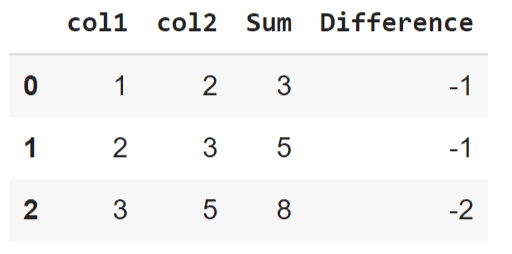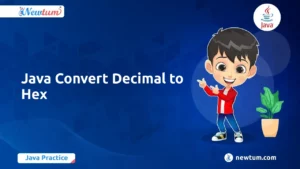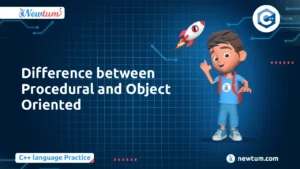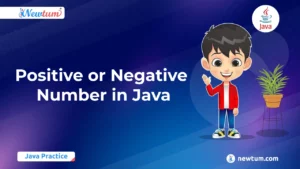Preparing for a Python interview is critical for individuals who want to increase their odds of success in employment interviews for positions in software development, data science, machine learning, and artificial intelligence. Having insight into Python interview questions and answers will enhance the quality of your preparation.
In this blog, we aim to provide you with a framework of Python interview questions and answers that can assist you in preparing for your interview.
I. Python Interview Questions for Freshers
Freshers are people who are brand new to the field and have little to no work history. This section provides basic Python interview questions and answers for newcomers who want to start a job in software development, data science, machine learning, or artificial intelligence.
Basic Python interview questions and answers for Freshers
Here are 10 basic Python interview questions and answers for freshers:
- What is Python?
Answer: Python is an interpreted, high-level, general-purpose programming language.
- What are the benefits of using Python?
Answer: Python has a simple syntax, is easy to learn, and has a large community of users. It also has a wide range of libraries and frameworks for various applications.
- What is PEP 8?
Answer: PEP 8 is a set of guidelines for writing clean and consistent Python code.
- What is the distinction between a list and a tuple in Python?
Answer:
| List | Tuples |
| A list is mutable, which means its components can be modified. | Tuples are immutable, meaning their elements cannot be changed |
| Lists are usually slower than tuples | Tuples are faster than lists |
| Lists consume a lot of memory | When compared to lists, tuples require a smaller amount of memory. |
| Lists are less error-prone because unexpected changes are more likely to occur. | Tuples are more reliable because it is difficult for any unforeseen change to occur. |
| Lists contain a plethora of built-in methods. | Tuples do not have any built-in operations. |
| Syntax:list_1 = [10, ‘Neutum,’ 20] | Syntax:tup_1 = (10, ‘Newtum’ , 20) |
- What is a PYTHONPATH?
Answer: PYTHONPATH is a Python environment variable that defines more directories where Python will look for modules and packages. It enables users to add custom directories to the search path for importing modules in Python programs.
- What are Python Modules?
Answer: Python Modules are files that hold Python code. This code, which can be classes, functions, or variables, saves the coder time by giving predefined functionalities when they are required. It is a file with the “.py” extension which includes functional code. Listed below are some frequently used constructed modules:
- os
- sys
- data time
- math
- random
- JSON
- What is a namespace in Python?
Answer: A namespace is used to ensure unique names and prevent naming disputes.
- What are the built-in types available in Python?
Answer: The following are examples of Python’s built-in types:
- Integer
- Complex numbers
- Floating-point numbers
- Strings
- Built-in functions
- What are the key features of Python?
Answer: The key features of Python include the following:
- Interpreted Language: Python is an interpreted language, meaning that each line of the code is executed separately as it is written. Debugging is simple as a result.
- Highly Portable: Python is very portable; it can be used to execute programs on a variety of operating systems, including Unix, Macintosh, Linux, and Windows. Consequently, we can conclude that it is a portable language.
- Extensible: Python language has an adaptable feature. We can write some Python code into C or C++ and then build that code using C or C++.
- Python is an interpreted language. Explain.
Answer: Any computer language that runs its instructions line by line is considered to be an interpreted language. Python programs don’t require a compilation phase in between; they can be launched straight from the source code.
Importance of preparing for a Python interview as a Fresher
Freshers must prepare for a Python interview in order to highlight their abilities, show their interest, and improve their odds of being employed. It entails working through practice coding problems reviewing crucial concepts, and researching the company to learn about its requirements. This investment in professional success can show potential for development and organizational contribution, help find knowledge gaps, boost confidence, and demonstrate potential for success.
II. Python Coding Interview Questions
Coding interview questions assess a candidate’s coding abilities, problem-solving abilities, and computer language proficiency for software development, data science, and related positions.
Coding Python Interview Questions and Answers
The following are some examples of Python interview questions and answers that are coding-related:
- Write a Python program to reverse a string.
string = "hello" reverse_string = string[::-1] print(reverse_string)
2. Write a Python program to check if a number is prime.
def is_prime(num):
if num < 2:
return False
for i in range(2, int(num/2)+1):
if num % i == 0:
return False
return True
print(is_prime(5)) # True
print(is_prime(10)) # False
3. Write a Python program to find the factorial of a number.
def factorial(num):
if num == 0:
return 1
else:
return num * factorial(num-1)
print(factorial(5)) # 120
4. Write a Python program to find the largest element in a list.
list = [3, 7, 1, 9, 5] largest = max(list) print(largest)
5. Write a Python program to sort a list in descending order.
list = [3, 7, 1, 9, 5] list.sort(reverse=True) print(list)
6. Write a Python program to remove duplicates from a list.
list = [1, 2, 2, 3, 4, 4, 5] new_list = list(set(list)) print(new_list)
7. Write a Python program to find the sum of all the elements in a list.
list = [1, 2, 3, 4, 5] sum = sum(list) print(sum)
8. Write a Python program to count the number of occurrences of an element in a list.
list = [1, 2, 2, 3, 4, 4, 5] count = list.count(2) print(count)
9. Write a Python program to find the second largest element in a list.
list = [3, 7, 1, 9, 5] list.sort() second_largest = list[-2] print(second_largest)
10. Write a Python program to find the length of the longest consecutive sequence of a number in a list.
list = [1, 2, 3, 5, 6, 7, 8, 10]
longest_sequence = 0
current_sequence = 0
for i in range(len(list)):
if i == 0 or list[i] != list[i-1]+1:
current_sequence = 1
else:
current_sequence += 1
if current_sequence > longest_sequence:
longest_sequence = current_sequence
print(longest_sequence)
Importance of practicing coding skills for a Python interview
Coding practice is essential for Python interview success because it increases problem-solving abilities, coding methods, and linguistic comfort. It can help find areas for development and boost confidence through coding challenges, courses, and mock interviews.
III. Advanced Python Interview Questions and Answers
Python interview questions and answers for experienced candidates may include advanced questions that test deeper knowledge of programming techniques, complex problem-solving skills, performance optimization, and usage of advanced libraries and features.
Advanced Python interview questions and answers
We have covered 10 examples of advanced Python interview questions and answers below:
- What makes a generator different from a list comprehension?
Answer: A generator is a type of iterator that yields values on-the-fly, whereas a list comprehension returns a list of values. Generators are often more memory-efficient, as they do not need to store the entire result in memory at once.
- What is Python’s GIL and how does it impact multithreading?
Answer: The GIL, or Global Interpreter Lock, is a Python mechanism that guarantees only one thread at a moment can run Python bytecode. In certain applications, this can restrict the performance benefits of using numerous threads.
- What are decorators in Python?
Answer: Decorators are a way to modify the behavior of functions or classes in Python. They allow you to wrap a function or class with additional functionality, such as logging, timing, or validation.
- What is the lambda function in Python?
Answer: In Python, a lambda function is an anonymous function (one that does not have a name). We use the ‘lambda’ keyword instead of the ‘def’ keyword to create anonymous functions, hence the term ‘lambda function’. Lambda functions accept an unlimited amount of inputs but only one statement.
For example:
l = lambda x,y : x*y print(a(5, 6)) Output:30
- What is slicing in Python?
In Python, slicing refers to the process of extracting a subset of elements from a sequence by specifying its start and end indices. Slice() in Python is used to divide a sequence into parts. It has two variations and sequences can be both iterable and mutable. The syntax for slicing in Python:
slice(start,stop)
silica(start, stop, step)
Ex.
Str1 = ("w", "e", "l", "c", "o", "m", "e", "t", "o", "n", "e", "w", "t", "u", "m")
substr1 = slice(5, 9)
print(Str1[substr1])
//same code can also be written in the following way
Str1 = ("w", "e", "l", "c", "o", "m", "e", "t", "o", "n", "e", "w", "t", "u", "m")
print(Str1[5, 9])
Str1 = ("w", "e", "l", "c", "o", "m", "e", "t", "o", "n", "e", "w", "t", "u", "m")
substr1 = slice(0, 14, 2)
print(Str1[substr1])
//same code can also be written in the following way
Str1 = ("w", "e", "l", "c", "o", "m", "e", "t", "o", "n", "e", "w", "t", "u", "m")
print(Str1[0, 14, 2])
- What is Scope Resolution in Python?
Answer: In Python, a scope is a block of code where an object stays pertinent. Python objects all operate within their particular scopes. Namespaces individually designate all objects within a program, but they also have a specified scope for them, which allows you to use their objects without any prefix. It specifies a variable’s visibility and lifespan.
Let’s take a peek at the scope that was created at the moment of code execution:
- The local items included in the current function are referred to as the local scope.
- A global scope refers to the objects that are available throughout the execution of the code.
- A module-level scope refers to the global objects that are associated with the current module in the program.
- An outermost scope refers to all the available built-in names callable in the program.
- How is memory managed in Python?
Answer: This is one of the most frequently encountered Python interview questions. Python memory management consists of a private heap retaining all objects and data structures. The interpreter manages the heap, and the programmer has no access to it at all. All memory distribution is handled by the Python memory manager. Furthermore, there is an inbuilt trash collection that recycles and frees heap memory.
- How do you delete a file in Python?
Answer: In Python, you can delete files with the os.remove (filename) or os.unlink (filename) commands.
- How can I use values from other columns to make a new column in Pandas?
Answer: We can use a pandas data frame to execute column-based mathematical calculations.
In Pandas, you can use numeric operators on columns that contain numerical values.
Code:
import pandas as pd
a=[1,2,3]
b=[2,3,5]
d={"col1":a,"col2":b}
df=pd.DataFrame(d)
df["Sum"]=df["col1"]+df["col2"]
df["Difference"]=df["col1"]-df["col2"]
df
Output:

10. What is pickling and unpickling?
Answer: In Python, the Pickle module can convert a Python object into a string representation and save it to a file using the dump function, which is pickling. To retrieve the original Python object from the string representation, we use unpickling.
C. Importance of understanding advanced Python concepts for an interview
Understanding advanced Python concepts is crucial for interview success, showcasing deep understanding and proficiency. It gives a competitive edge and is essential for career growth in software development, data science, and machine learning roles.
IV. Python Data Science Interview Questions
Python Data science interview questions are answers that are typically asked during a job interview for a data science position. These questions are designed to test the candidate’s knowledge and understanding of data science concepts, tools, and techniques.
Python interview questions and answers (Data Science)
10 examples of Python interview questions and answers in Data Science are mentioned:
- What is NumPy in Python?
A Python package called NumPy is used in scientific computing. It offers functions for performing mathematical operations on arrays and matrices as well as support for these data types.
- What are Pandas in Python?
Python programmers use Pandas, a library, to manipulate and analyze data. It supports data structures like DataFrames and Series, as well as data cleaning and transformation operations.
- What is the key difference between Map, Reduce, and Filter?
Map : It applies the given function to all the iterable and provides a new and modified list. Each element on the sequence has the same function applied to it.
Reduce : It applies the same operation to the items of a sequence. Using the result of operations as the first parameter of the next operation, it returns an item and not a list.
Filter : It filters an item out of a sequence. The function filters the given iterable using another function passed as an argument to test all the elements for their truth value.
- What makes “is” and “==” different from one another?
Answer: ‘==’ examines for equality between variables, whereas ‘is’ verifies for variable identity.
- What distinguishes the functions del(), clear(), remove(), and pop()?
del(): This function removes a value from a list based on its position and does not return the value that was removed. It also shifts the index of all the elements to the right of the removed value by one position. It can also be used to delete the entire list.
clear(): This function removes every element from a list.
remove(): This function removes a value from a list based on its value, so you need to know which value to remove.
pop(): By default, this function removes the last element of a list and returns the removed value. It’s useful for creating references to the removed value, which you can store in a variable and use later.
- Explain the difference between range, xrange, and arange.
Answer: range(): produces an integer-only Python list object. It is a BASE Python function.
xrange(): This function returns a range object.
arange() is a Numpy library function. It can also return fractional values.
- What is the difference between print and return?
The print statement lacks any data to output. print() displays the value on the console, whereas return outputs the value that can be stored in a variable or a data structure.
- What is the difference between duplicated and drop_duplicates?
Duplicates determine whether or not the records are similar. It yields either True or False. False denotes the absence of duplication. By a column name, the function Drop_duplicates removes duplicates.
- Which Python libraries specifically have you used for visualization?
Matplotlib: Many people use Matplotlib, a well-known data visualization tool, to create two-dimensional graphs. It helps in the plotting of scatterplots, non-Cartesian coordinate graphs, pie charts, bar or column graphs, and histograms. Matplotlib serves as the foundation for other libraries, and the backend makes use of its features. It is also common to use it for designing the plotting axes and layout..
Seaborn: Data visualization package in Python called Seaborn is based on matplotlib. For Pandas and Numpy, it works fantastically. It offers a sophisticated user interface for creating visually appealing and useful statistics visuals.
- What is a scatter plot?
A scatter plot is a two-dimensional data visualization that shows how observations of two separate variables relate to one another. The first is plotted against the y-axis, while the second is plotted along the x-axis.
Importance of understanding data science concepts for a Python interview
An advanced understanding of data science concepts is crucial for a Python interview, as it showcases the ability to efficiently work with and analyze data, solve problems, and communicate with stakeholders. It is essential for staying current in a rapidly expanding field.
V. Python Machine Learning Interview Questions
For positions that require knowledge of machine learning concepts and techniques, machine learning interview questions assess a candidate’s grasp of algorithms, computing skills, and problem-solving abilities.
Python Interview Questions and Answers (machine learning)
Check out these 10 Python interview questions and answers focused on machine learning:
- What is data preprocessing in machine learning in Python?
Answer: Data preprocessing involves transforming raw data into a format suitable for machine learning algorithms. This may include tasks such as data cleaning, normalization, feature scaling, and handling missing values.
- Define KNN
Answer: K-Nearest Neighbors (KNN) is a non-parametric machine learning algorithm used for classification and regression. It involves finding the k-nearest neighbors to a given data point and predicting its label based on the labels of its neighbors.
- Name the Challenges and Application of Machine Learning.
Answer: Challenges: Overfitting, underfitting, bias-variance tradeoff, feature selection, and data scarcity are some of the challenges in machine learning.
Applications: Image and speech recognition, natural language processing, fraud detection, recommendation systems, and autonomous vehicles are some applications of machine learning.
- Define the libraries for machine learning.
Answer: NumPy, Pandas, Matplotlib, Scikit-learn, TensorFlow, Keras, PyTorch, and OpenCV are some popular libraries for machine learning in Python.
- Define Ridge regression.
Answer: Ridge regression is a linear regression technique that involves adding a penalty term to the cost function to prevent overfitting. The penalty term multiplies the sum of the squares of the regression coefficients by a regularization parameter.
- What does K-means?
Answer: K-means is a clustering algorithm that gathers data points with similar features. It entails grouping the data into k clusters, where k is the user-specified number of clusters.
- Mention the reason why Python is the best for machine learning.
Answer: Python is best for machine learning because it is easy to learn, has a large and active community, has a wide range of libraries and frameworks for machine learning, and is flexible and versatile.
- Name the categories of Machine Learning Algorithms with python.
Answer: Supervised learning, unsupervised learning, and reinforcement learning are the three categories of machine learning algorithms in Python.
- What is Type I and Type II Error?
Answer: Type I error happens when one rejects the null hypothesis even though it is true, whereas Type II error occurs when one accepts the null hypothesis even though it is false. Type I error is also known as a false positive, while Type II error is also known as a false negative.
- What are the three steps of developing a model in machine learning?
The three stages for creating a model in machine learning are as follows:
- Model Building
- Model test
- Applying the model
Data science concepts are crucial for a Python interview in data science, machine learning, and artificial intelligence. Python is popular due to its extensive libraries and tools, and implementing data science ideas demonstrates a strong foundation and ability to work with complicated data.
VI. How to Prepare for a Python Interview
Python Coding Interview Preparation
Here are some Python interview preparation tips :
- Revise the basics concepts: Brush up on Python basics such as syntax, data types, and control structures.
- Practice coding problems: Practice coding problems related to data structures, algorithms, and other topics commonly covered in Python interviews.
- Research the company: Learn about the company you are interviewing with, their industry, and the role you are applying for.
- Be familiar with common Python libraries: Have a working knowledge of popular Python libraries such as NumPy, Pandas, and Scikit-Learn.
- Prepare questions: Prepare questions to ask the interviewer about the role and the company.
Resources for preparing for a Python interview
There are many resources that are easily available to help you prepare for a Python interview, such as online courses, books, and tutorials.
| Sr. No | Name of Books | Authors |
| 1. | Python for Data Science Handbook | Jake VanderPlas |
| 2. | Python Crash Course | Eric Matthes |
| 3. | Learn Python the Hard Way | Zed Shaw |
Practice problems and coding challenges can also be found on sites like Newtum, LeetCode, and CodeSignal. Additionally, attending mock interviews or seeking feedback from others can help identify areas for improvement and increase confidence for the real interview.
We hope that you found this blog on “Python Interview Questions and Answers” was informative and useful. Explore the Newtum official website for more interesting Python and coding-related courses and prepare with confidence and increase your chances of success.
Python Interview Questions and Answers for 2023: FAQs
- As a beginner can I refer to python Interview questions and answers?
Answer: Yes, we also covered Python interview questions for freshers along with answers.
- Are there any Python technical interview questions?
Answer: Python is a technical programming language so all questions are Python technical interview questions.
- As an experienced programmer, is this blog useful for me?
Answer: For experienced programmers, Python advanced interview questions will be helpful.
- What are the benefits of these Python interview questions and answers?
Answer: This is a valuable resource for individuals interested in Python-related job profiles to refer to for an interview.
- How to prepare for a Python coding interview?
Answer: Through Python interview questions and answers you can prepare yourself for good performance.



